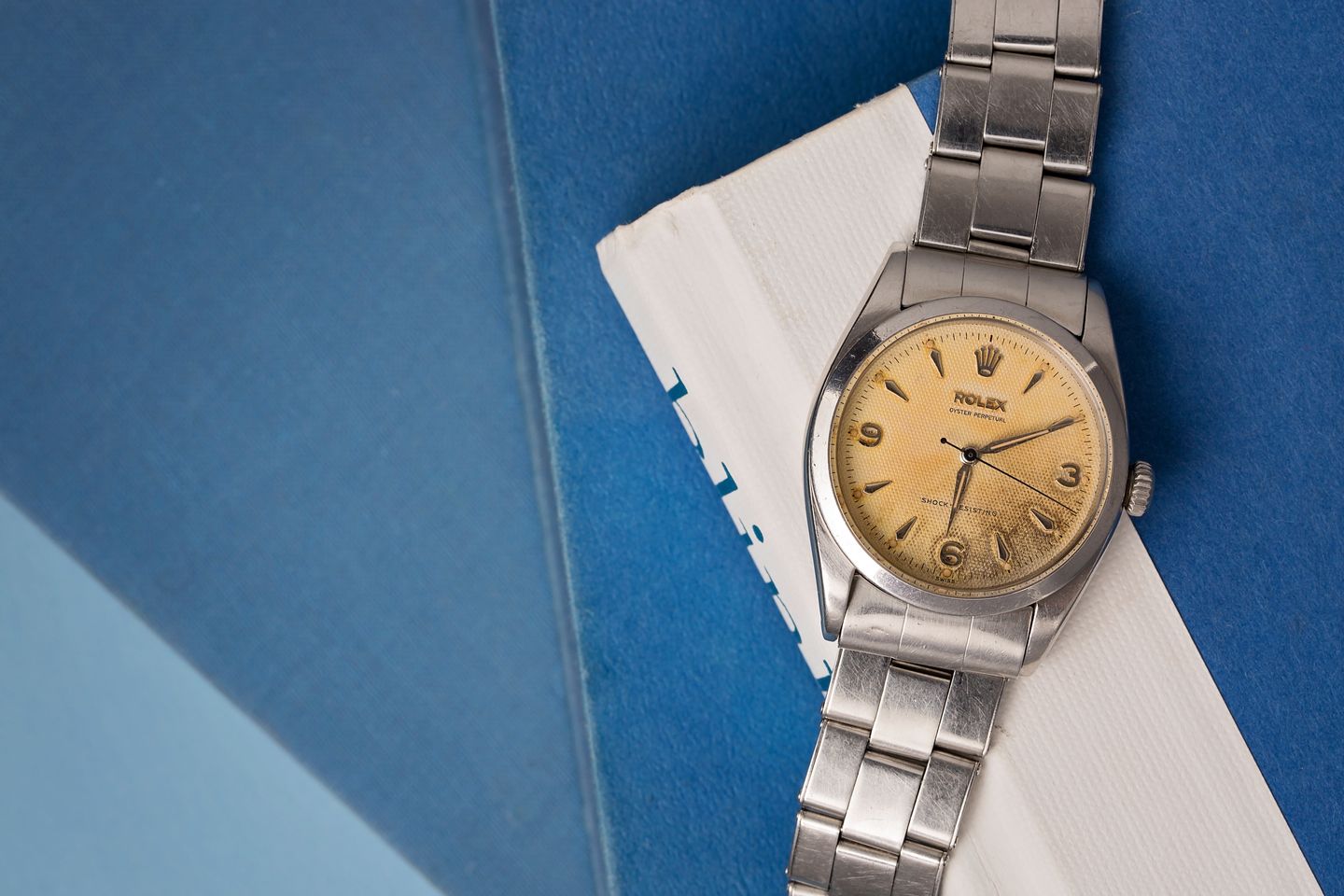The Rolex Oyster Perpetual family is one of the most enduring the watchmaking industry has ever seen. Old as the name may be, it is far from a dusty corner of the brand’s illustrious catalog. The Oyster case, which is largely responsible for Rolex’s unassailable position in the watch market, setting the tone for everything that was to follow, is so well regarded that the basic principles of it are used on the majority of the brand’s models. Precision engineering and corrosion-resistant 904L stainless steel mean the modern iterations of this classic design are beautiful to look at while remaining tough enough to withstand whatever the world can throw at them.
There are many reasons to fall in love with the Rolex Oyster Perpetual. Whether one is drawn to the beginnings of its long and fruitful life steeped in prestige and success or is interested in the company’s modern take on the classic Oyster watch like the Sky-Dweller (boasting a total of 14 patents) its practical design has stood the test of time. Considered the bread and butter to the Genevan-based manufacturer’s long line of technically-focused and incredibly robust timepieces – the Oyster Perpetual is halfway between elegant and sporty, thus making it the perfect everyday watch that looks good on the wrist whether paired with a polo shirt or a professional business suit.
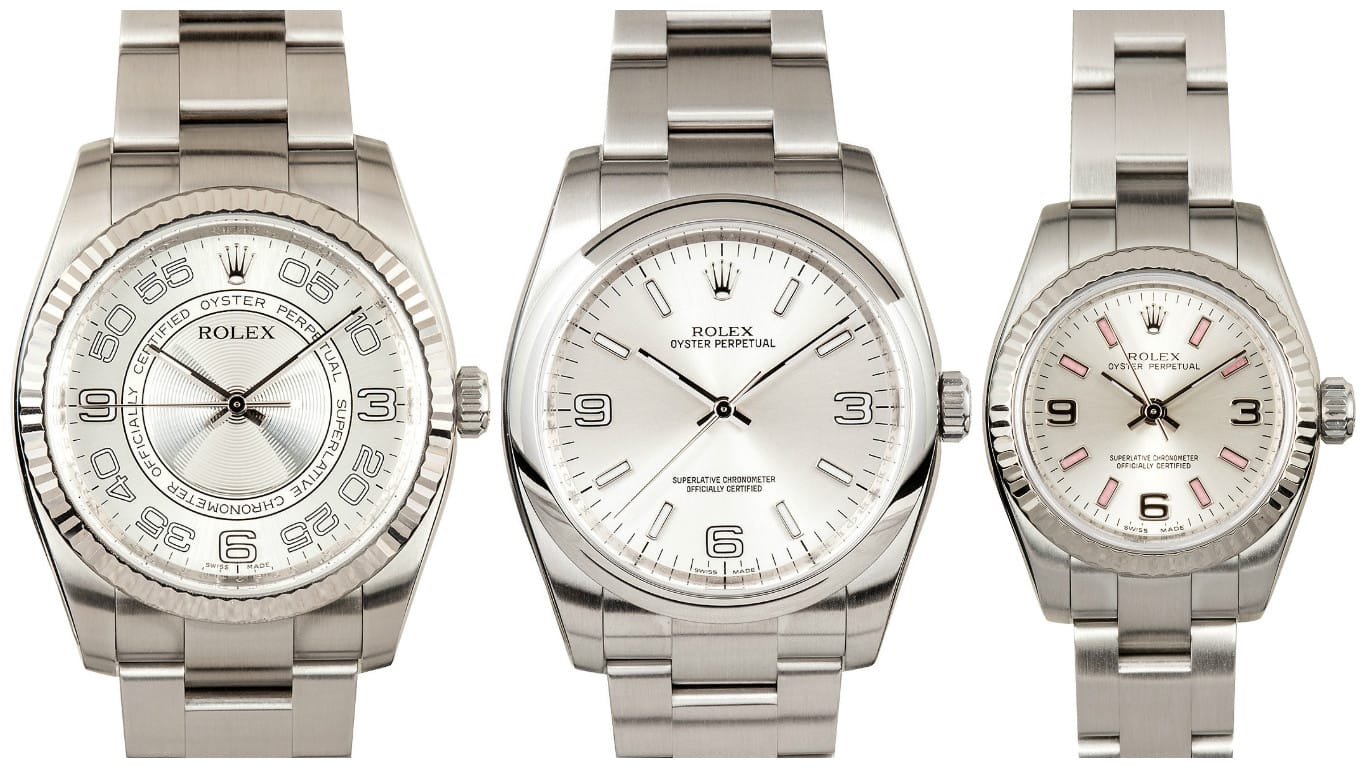
The hermetically sealed case of the Oyster Perpetual enabled Rolex founder, Hans Wilsdorf to achieve his dream of creating a wristwatch that was just as indispensable and just as reliable as a pocket watch. To many watch connoisseurs, the Rolex Oyster Perpetual cannot be mentioned without it sparking enthusiasm for its revolutionary patented case system, featuring 100-meters of water resistance.
But it is so famous, so often imitated, so revered as an industry icon, you’d think that in 2019 there was very little to be said about the Oyster Perpetual that hasn’t been said before. However, the most long-lived label within the Rolex canon has more strings to its bow. Here we take a look at a few things that really set the Rolex Oyster Perpetual collection apart that only collectors are likely to know.
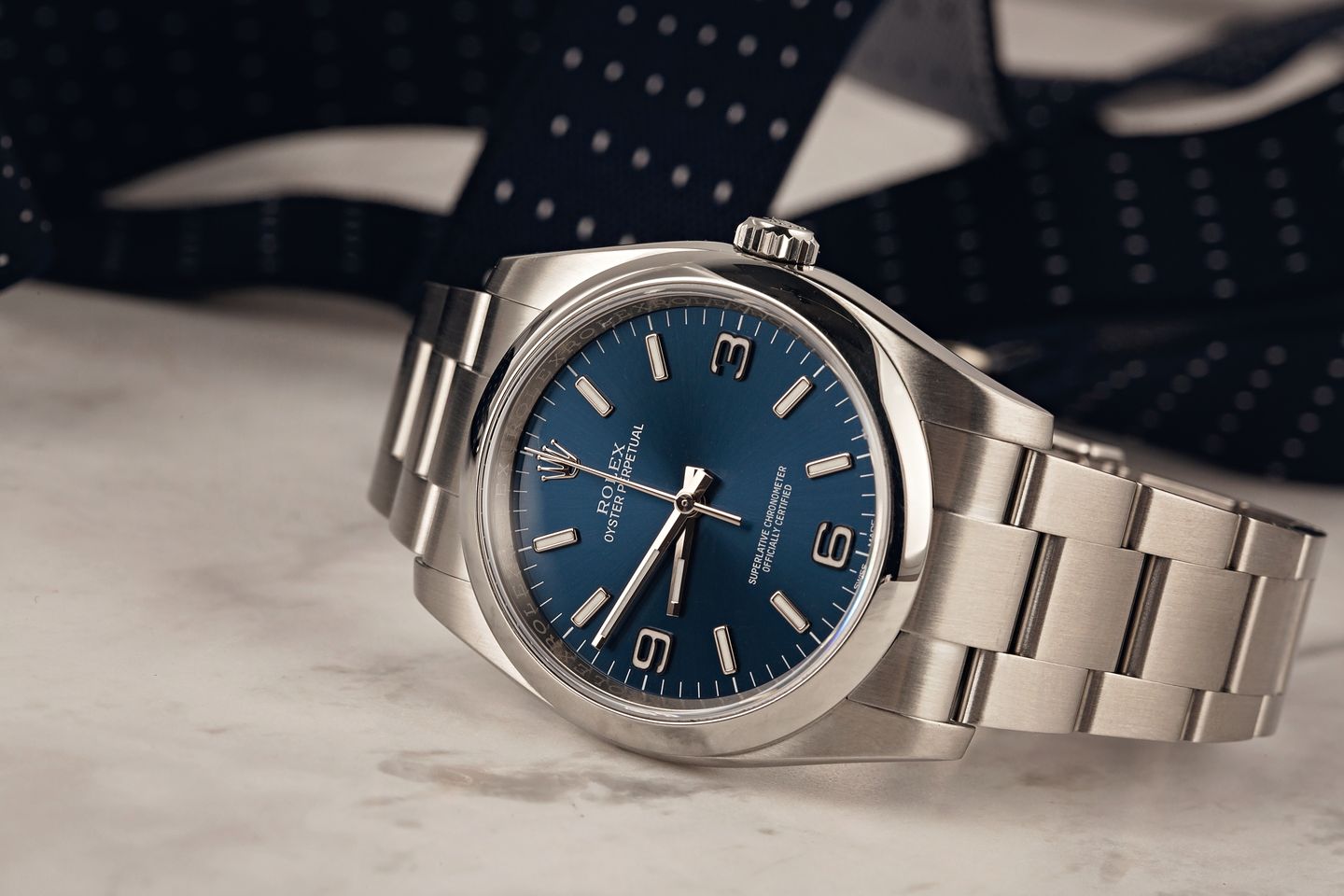
1) The World’s First Waterproof Wristwatch
The Rolex Oyster (the manually-wound precursor to the Oyster Perpetual) is often casually referred to as the world’s first waterproof watch. Nowadays, the term waterproof has been superseded by the more accurate (and less committal) “water-resistant” but at the time of the Oyster’s launch in 1926, this subtle semantic shift had not yet occurred.
You don’t have to dig too far to find several chapters of history ready to rain on Rolex’s parade in regards to this claim, however. The earliest reference of a (pocket) watch designed with the explicit intention (and subsequent ability) to withstand water ingress was in 1851 and credited to W. Pettit & Co. of 2 Crombie’s Row, Commercial Road East, London. This watch was shown at the Great Exhibition held in London and was displayed fully submerged in a tank of water.
But this achievement, impressive as it was for the time, pales into comparison when stacked against the Oyster Case’s ability to remain water-resistant during submarine activity. Wilsdorf was able to prove the Oyster’s sporting credentials thanks to swimmer Mercedes Gleitze testing the watch during an attempt at crossing the English Channel. The watch survived the ordeal and paved the way for future Rolex developments that would further secure the brand’s status as the foremost horological innovator of the early 20th century.
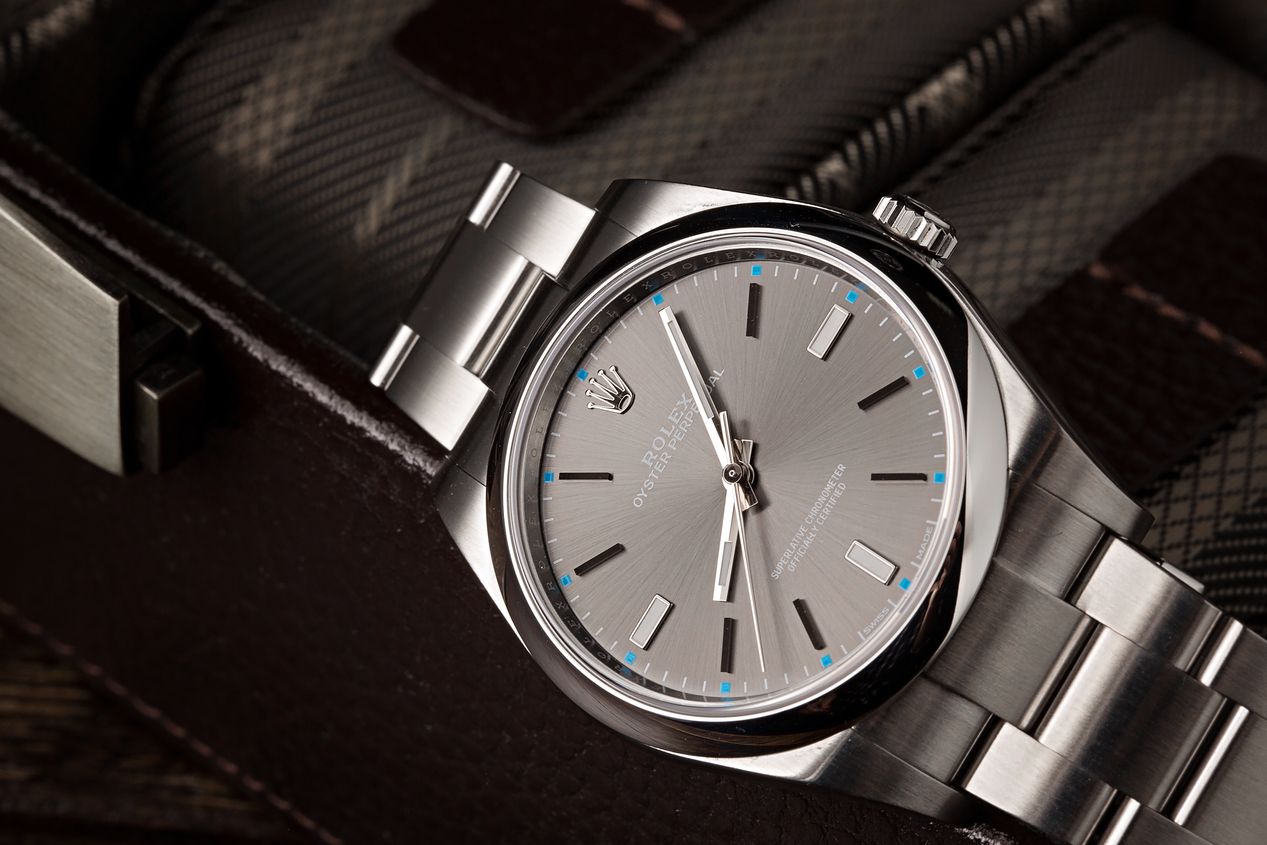
The Oyster case was formulated by Rolex’s technical team of experts and engineers who wanted to create a robust and hardy housing for one of their mechanical movements. The Rolex Oyster case featured a patented system that allowed the bezel, the winding crown, and the caseback to screw down to the middle barrel of the case. Today, all of the watches in the Rolex Oyster Perpetual collection are made from 904L stainless steel – considered especially corrosion and scratch-resistant, perfect for facing any challenge head-on. The same material is more often than not used for the bracelet which hugs the contours of the wrist, exuding a rugged, handsome aesthetic that has come to be loved the world over.
Although a popular and practical design feature, the fluted bezel of the Rolex Oyster Perpetual watch was originally created to serve a purpose. The fluting was used to screw the bezel onto the middle case with a special tool exclusive to Rolex, and even though the design of the watch has changed and no longer requires fluting to properly secure the bezel onto the case, the beauty and appeal of the fluted bezel design endures. Rolex Oyster Perpetual watches also feature a screw-down Twinlock crown, fitted with two sets of gaskets that prevent water from leaking in and damaging the watch.
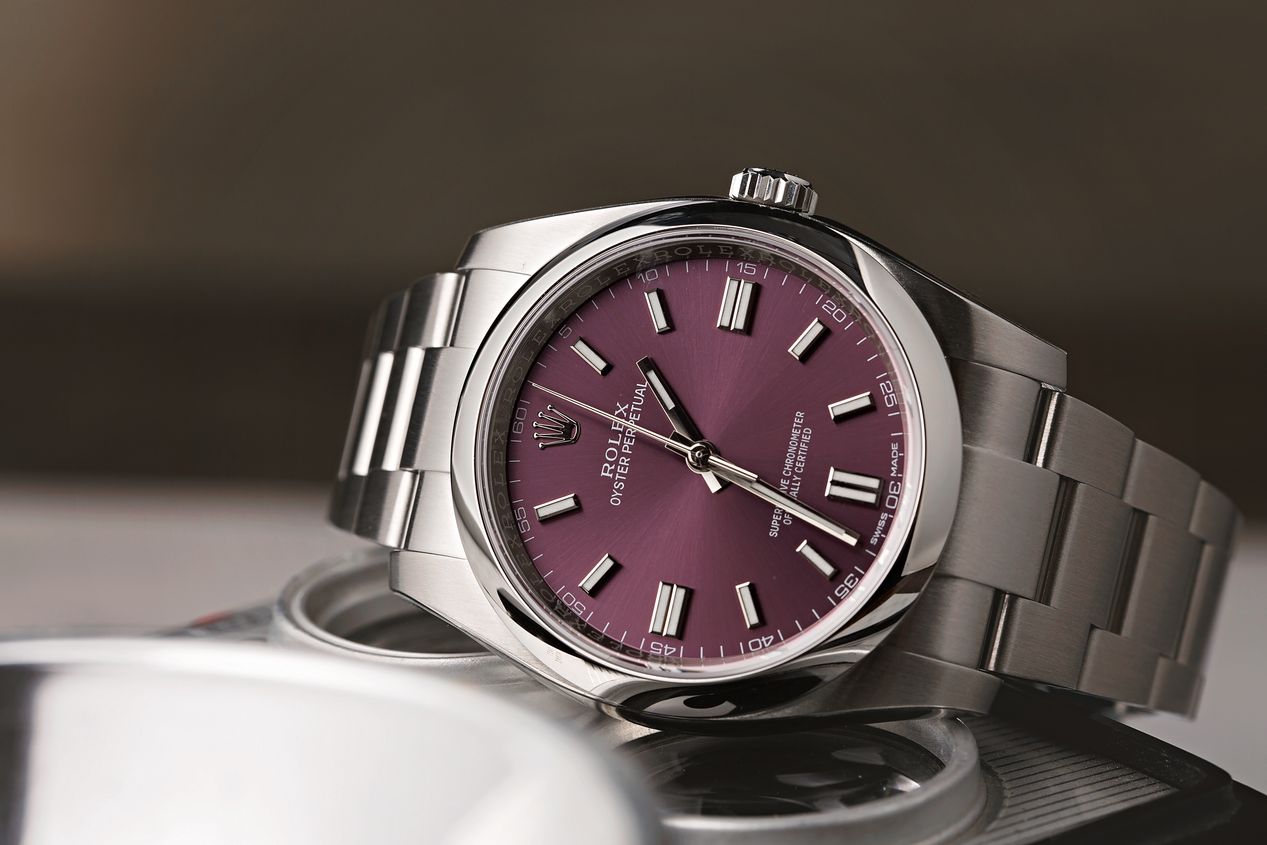
2) Every Rolex Watch Is Technically Part Of The Oyster Perpetual Collection
Despite the fact that the Rolex Oyster Perpetual marked a pivotal moment in the history of modern watchmaking, the term “Oyster Perpetual” often appears in a number of other Rolex watch models like the Submariner, GMT-Master, and Daytona. In Rolex terminology, “Oyster” refers to the fact that the caseback screws down for water resistance, and the term “Perpetual” means that the movement is self-winding.
Today, virtually all Rolex watches follow the core structure of the Oyster Perpetual, making almost all modern Rolex watches technically part of the greater Oyster Perpetual collection. In fact, the Rolex Cellini is the only watch that does not use the Oyster case design. The Rolex Oyster Perpetual has served as the building block for so many timepieces – its straightforward design with three hands remaining one of the most recognizable and popular Swiss luxury wristwatches of all time. Modern watches like the Rolex Submariner and the Rolex Daytona are built on both the same basic structural and technical foundations of the Oyster Perpetual watch, despite Rolex watches continuously evolving over time.
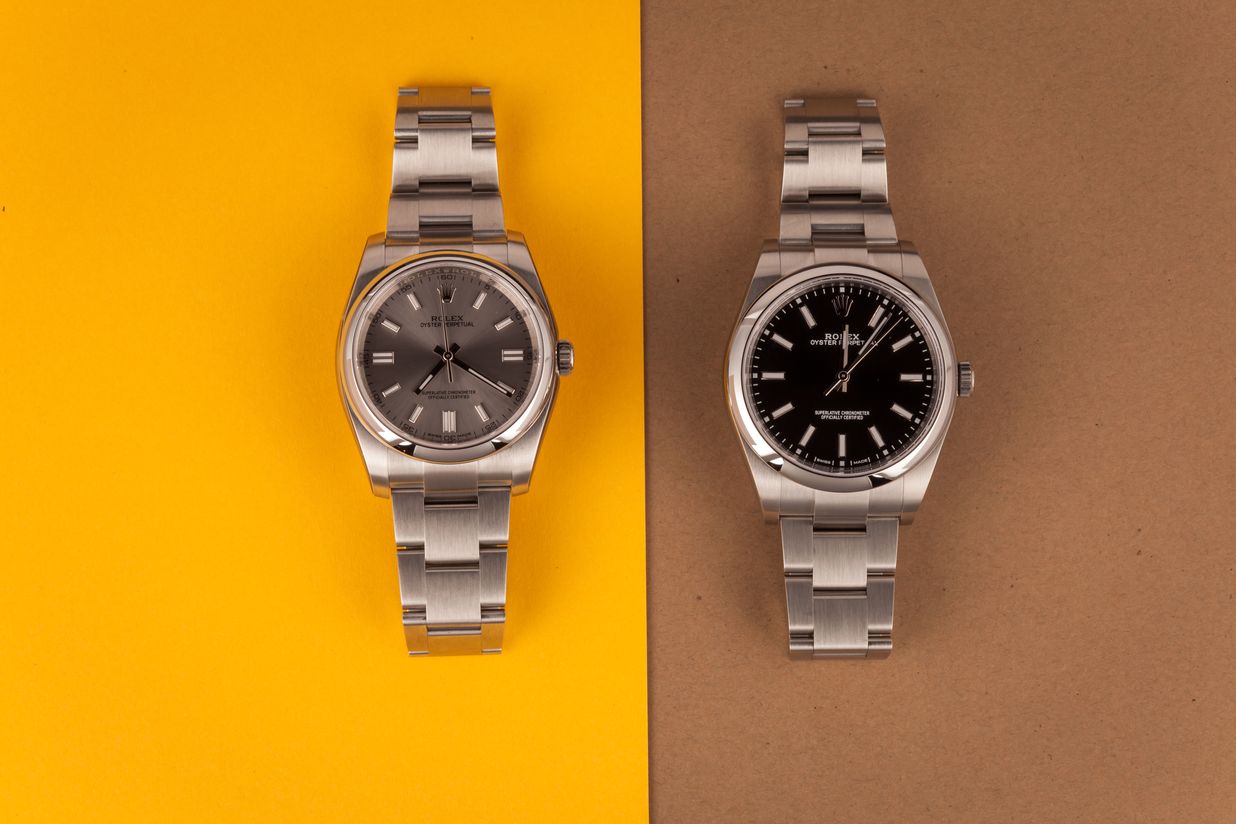
3) The Oyster Perpetual Was Rolex’s First Automatic Movement
Heralding a new era of convenience and superb functionality, Wilsdorf believed the Rolex Oyster Perpetual watch had to go above and beyond the realms of traditional Swiss watch manufacturing in order to get noticed and offer the wearer something more desirable in a timepiece. He knew that if the crown had to be pulled out every day to wind the watch’s mechanism, its waterproof qualities would be compromised over time, so with the launch of the new Oyster Perpetual watch came the automatic winding rotor mechanism from which the model takes the second part of its iconic name from.
The self-winding mechanism features an oscillating weight that winds the mainspring as it rotates with the natural motion of the user’s wrist throughout the day. This not only winds the watch, but also guarantees a constant tension in the mainspring without the wearer ever having to unscrew the crown. This ingenious system was a true work of art and ingenuity by Rolex, rotating 360 degrees with the natural movements of the wearer’s wrist to generate its power.
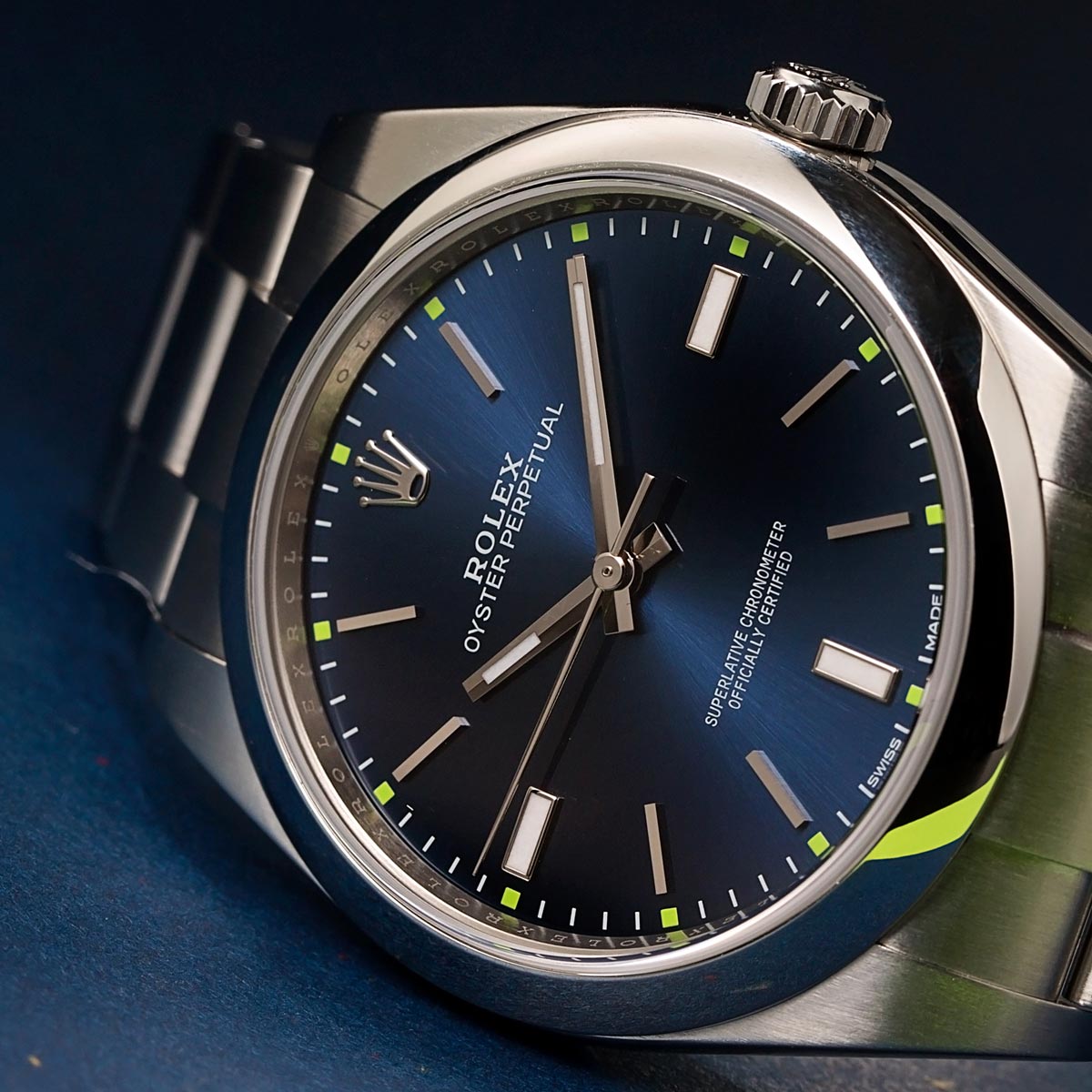
4) A Rolex Oyster Perpetual Reached The Summit Of Mount Everest:
Forever testing their watches through the most extreme conditions in the never-ending pursuit of perfection, Rolex sent a pair of Oyster Perpetual watches up to the summit of Mount Everest in 1953. When Sir Edmond Hillary and Tenzing Norgay became the first humans to reach the summit of the world’s tallest mountain, it was Rolex Oyster Perpetual watches that they carried with them.
Feedback from real-world testing allowed Rolex to refine and perfect the reliability of their watches. This method of testing their watches in the most demanding conditions on earth ultimately resulted in the creation of Rolex’s various Professional collections of sports watches, each one purpose-built to thrive in some of the most demanding and extreme conditions on this planet.
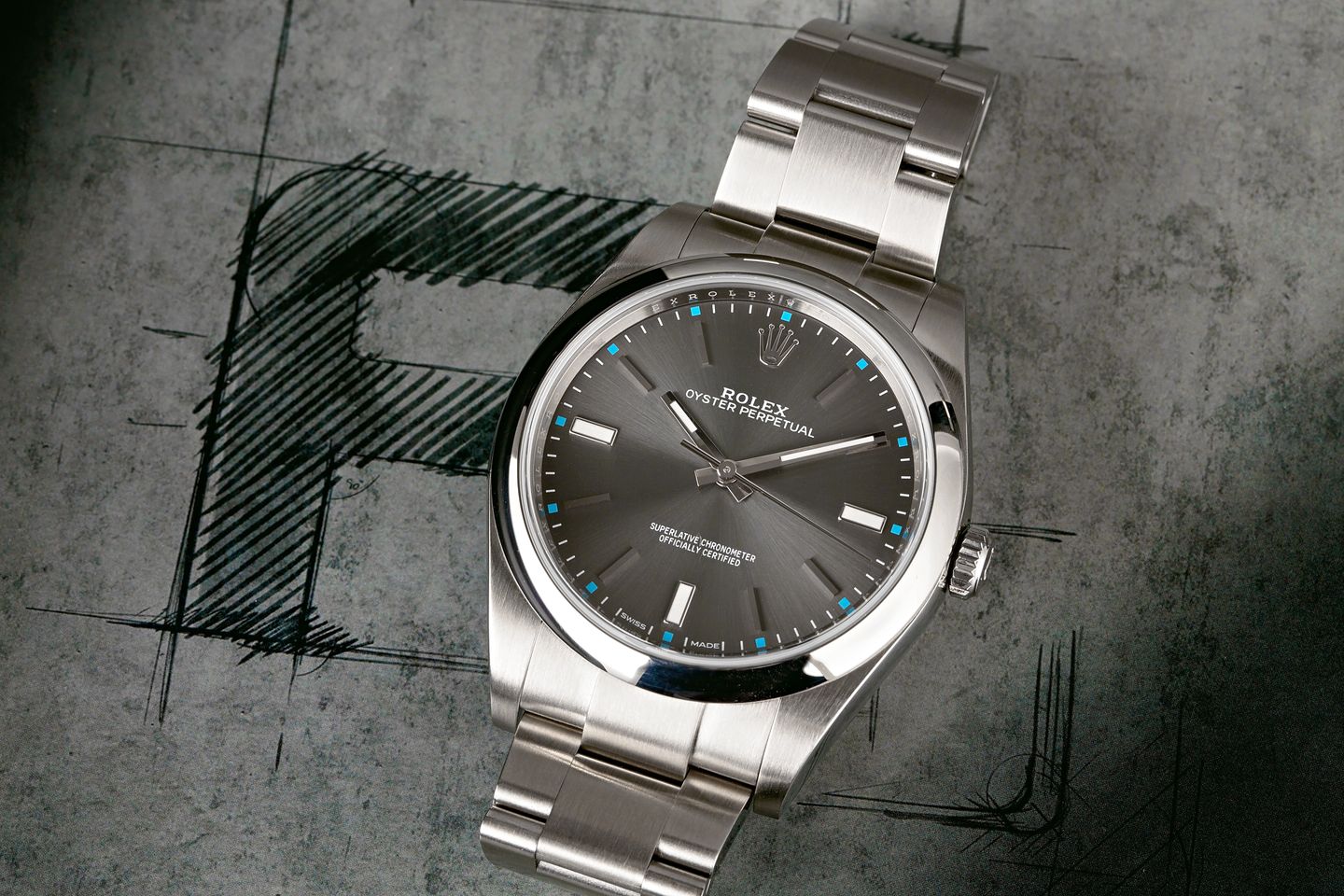
5) The Oyster Perpetual Set A Precedent For Many Rolex Watches To Come:
When launched in 1926, during Art Deco’s prominence, neither of the original two Rolex Oyster watches were round. There was one cushion-shaped case and another octagonal one. This didn’t affect their water resistance at all, but it did affect their longevity in the collection. When the Rolex Oyster Perpetual debuted in 1931, it did so in what has become a signature look for Rolex. Now, every watch in the Rolex collection employs a “round” case, making the pre-Oyster Perpetual days something of an anomaly.
Aside from its reliable and water-resistant qualities, the Oyster Perpetual offers a clear and accurate time display, an example on which Rolex would build their astounding reputation in the years that followed. 1945 marked the year that the Rolex Oyster Perpetual Datejust was born – the first-ever self-winding chronometer wristwatch to feature a date display on its dial; and 1956, saw the arrival of a new flagship watch: The Rolex Day-Date President. While the Datejust adds a date complication, and the Day-Date adds both a day and a date complication, both watches share the same core design DNA as the original Rolex Oyster Perpetual.
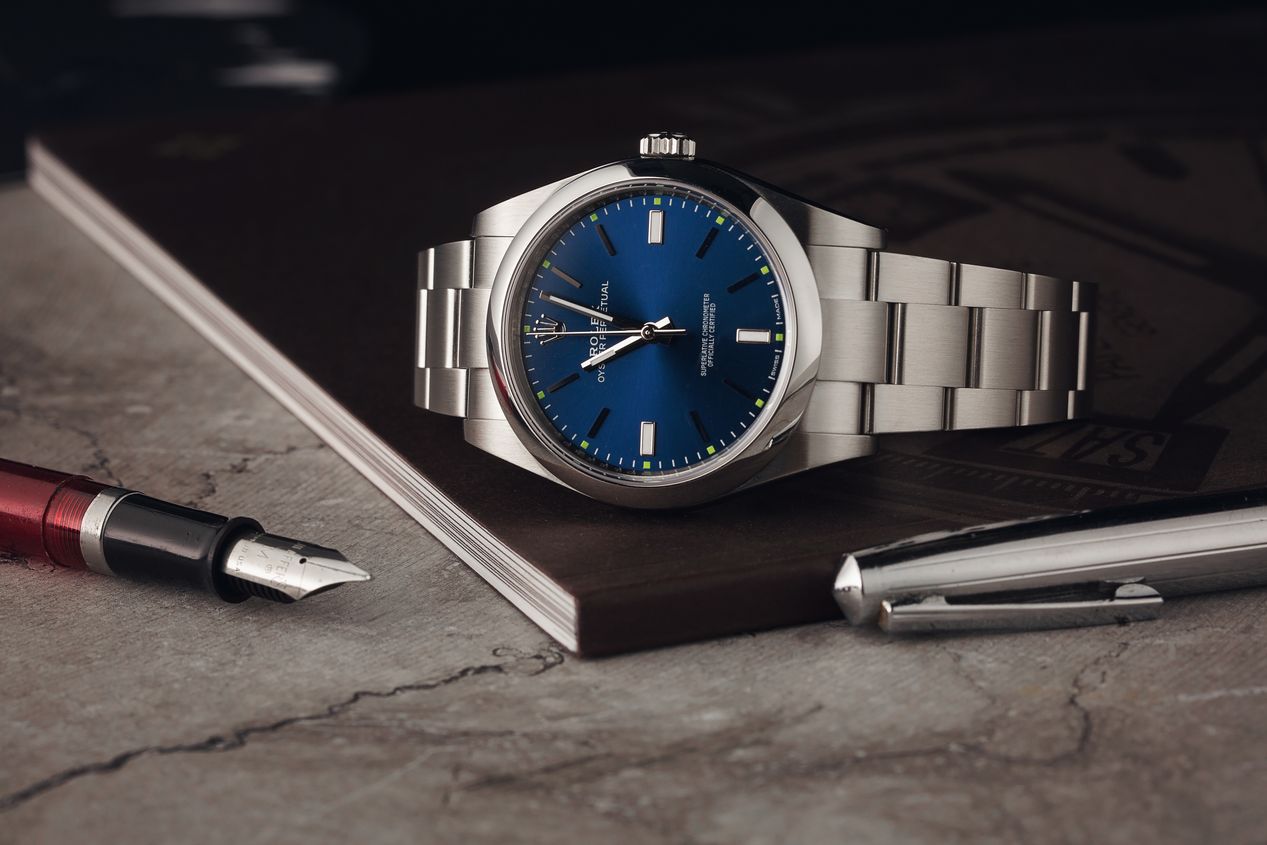
Other Rolex watch collections built upon the core design of the classic Oyster Perpetual watch to create purpose-built timepieces, specifically designed for certain sports or environments. The Rolex Submariner adds a rotating timing bezel and increases the water resistance to allow it to be used for scuba diving, while the Daytona features a tachymeter bezel and a chronograph complication which enables users to use it to measure elapsed time, or gauge speed and distance.
A series of other technological advancements have accompanied the Oyster Perpetual’s unique design over the years, including the company’s first movement to feature their patented Blue Parachrom hairspring, which Rolex claims is ten times more resistant to shocks than traditional hairsprings. More recent masterpieces include the likes of the Rolex Sky-Dweller and the new Yacht-Master II. The Sky-Dweller is Rolex’s most complicated watch to date, and adds an annual calendar and a dual time zone complication to the core design of the Oyster Perpetual watch which elevates Rolex’s classic wristwatch design to an entirely new level of refinement and functionality.
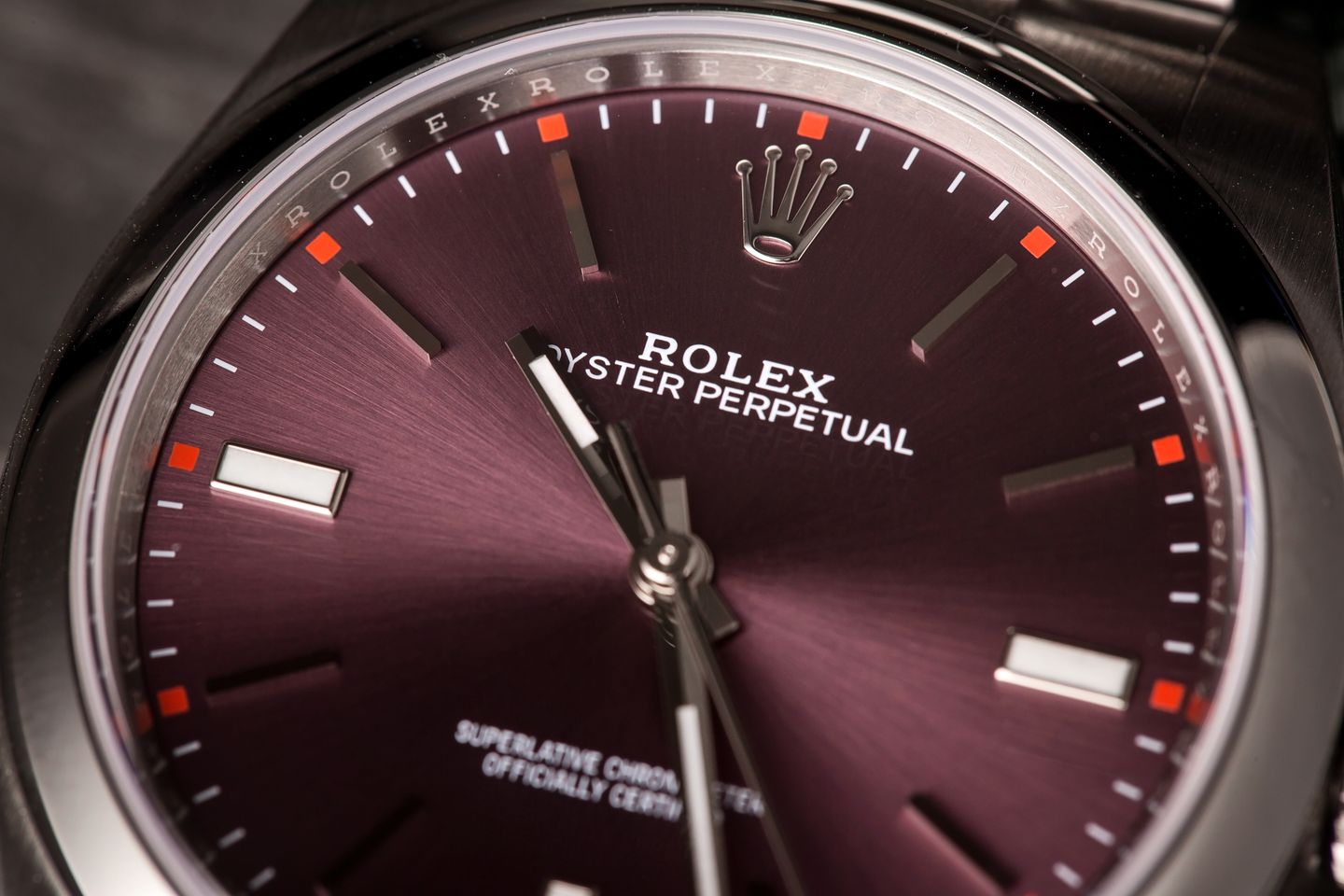
BONUS: The Oyster Perpetual and the Rolex Crown Logo
In 2019, it is almost impossible to imagine the Rolex brand without the five-fingered crown sitting above the word-mark, it was not always part of the brand identity. In fact, the crown logo wasn’t even registered until 1931 (the same year the Oyster Perpetual debuted). As such, the Oyster Perpetual became the first Rolex model to feature the now-iconic badge.
It wasn’t until the 1950s, however, that crown started popping up on the winding crown. In modern times, the crown logo is so important to the Rolex brand it has even replaced the 12 o’clock markers on some dials, most notably (and perhaps most appropriately) this is the case for the Rolex Oyster Perpetual family.
